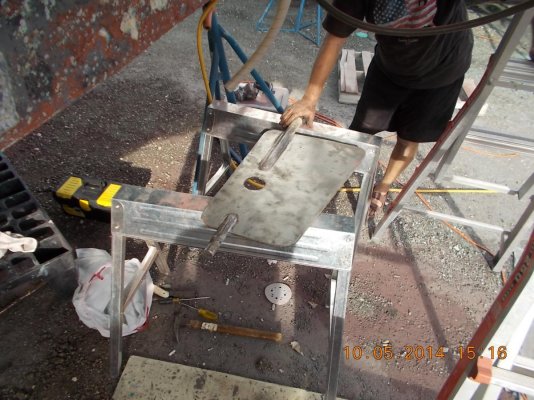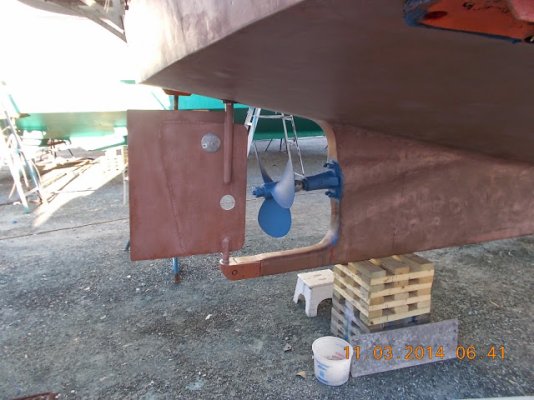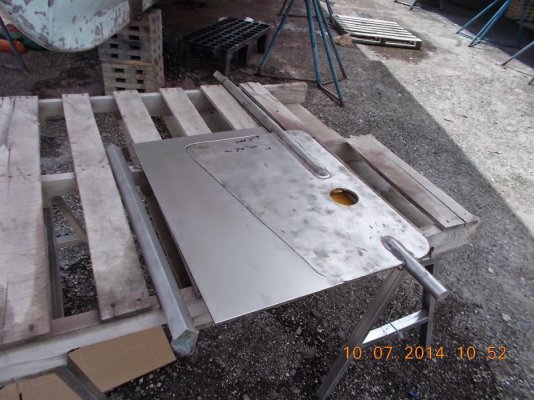RT Firefly
Enigma
Greetings,
Re: Post #25. Is there a propeller missing on the end of that shaft or am I missing something?
Re: Post #25. Is there a propeller missing on the end of that shaft or am I missing something?
Not sure what data you're looking for.
If you look back through my post you can see what I did. I can make a near zero radius turn if I want with my single screw boat. Just google funangler rudder and that will lead to most of the post. There is also a video of the boat in action on YouTube.
I wonder how many people who have modified their rudders have any real before and after data with a good before baseline to prove the modification was of any real benefit.
I have about 38 degrees and to get any more I would need a bigger steering ram, I think I am going to add material to both sides of the Rudder, that should give me a few more degrees, and might even help in reverse.
Steve
Thanks Brooksie.
While I've recomended increasing rudder deflection numerous times in the past the following comes to mind.
I have 90 degrees of rudder deflection and it never occured to me that my larger than normal ram cylinder had anything to do w the 90 degree deflection. Well the more deflection you have the less torque will be applied to the rudder shaft? I have a very large ram and helm pump for a 30' boat also w a very big rudder. Not to mention three turns L to L. Knowing that I may not now be as eager to recomend it to boaters w normal sized steering systems. I also have noticed in 7' quartering stern seas that my system handles the large rudder forces fine. So at this point I need to say that a steering system w a faster rudder (large deflection) will need the whole system powerful enough and robust enough to handle the increased loads and I have no idea if the average system can do it gracefully. I installed the oversized steering system for other reasons and it came in very handy when I increased the swing to 90 degrees. So if one goes to the wide swinging rudder w decreased mechanical advantage (as I did) the whole system needs to be strong enough to handle the increased forces.
Absolutely, I will add as much as I can to the front of the rudder to keep it balanced.
Thanks



READY,
Where did you read rudder area should be 5% of hull profile? Was a certian type of boat called out like FD? Sailboats and power boats faster than trawlers I'm sure would need different numbers.
I'm a natural born modifier and frequently go there. My ideal rudder would be even bigger than what I have w hydraulic power steering and a 90 degree swing. I really don't need a better rudder but lighter steering effort would be welcome.
For roughly displacement speeds it's really hard to imagine a rudder too big. Just need it strong enough and w high enough control power. One needs to be careful not to back so fast that the forces become so great on the rudder that it takes the helm out of your hands and slams the rudder against the stops. That could cause some damage. A bigger rudder should have a stronger system and more power or mechanical advantage to control it.
"
Bow thruster is common , our Launch has a "backing rudder".
This is a bronze cone that looks like a megaphone mounted in front of the rudder on its own shaft . A link to the rudder swings it in the same direction.
Flankers......Some guys love them, others thing they are a waste of time.
